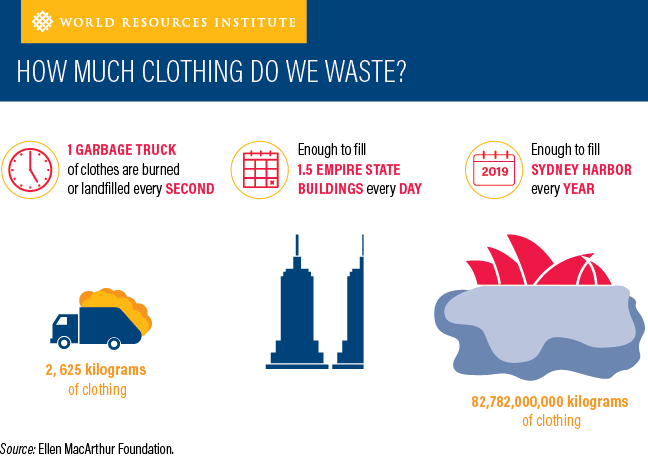PVH Design Package
Digital Fashion
To complement our pitch, we have created this handover package. It's a digest of all the findings, exploration and research we did for this project. It includes secondary research like trend analysis, as well as primary research, interviewing potential users as well as experts. We also show in greater detail the different ideas we explored and how it evolved during our process.
MADE BY: Debora Viegas, Marcos Arruda, Albert Urchukov & Nils Westhoff
12 JUNE 2020
Table of Contents
Secondary research
The point of this secondary research was to collect data that deepens our understanding of the problem space.
Trends
Industry
- Digital & physical fashion are converging at high speed.
- Fashion industry faces an ‘existential crisis’, the lockdown has been a wakeup call for the whole industry and Gucci has just announced it is going seasonless.
- Fashion needs a shared purpose, with a sustainable future as a pole star, as it’s now responsible for 10% of all humanity's carbon emissions.
- ‘Radical transparency’ and ‘ethical fashion’ are no longer buzzwords.
- Fashion is going digital: digital clothes (like Carlings and Rohbau), virtual fashion shows, virtual influencers, AR-powered virtual try-ons.
- A new way of values exchange are emerging (Money, data, power, time, support).
- Mainstream brands (like Tommy Hilfiger) are starting to committing to 100% digital design.
- Fashion and beauty brands are starting to take AR more seriously

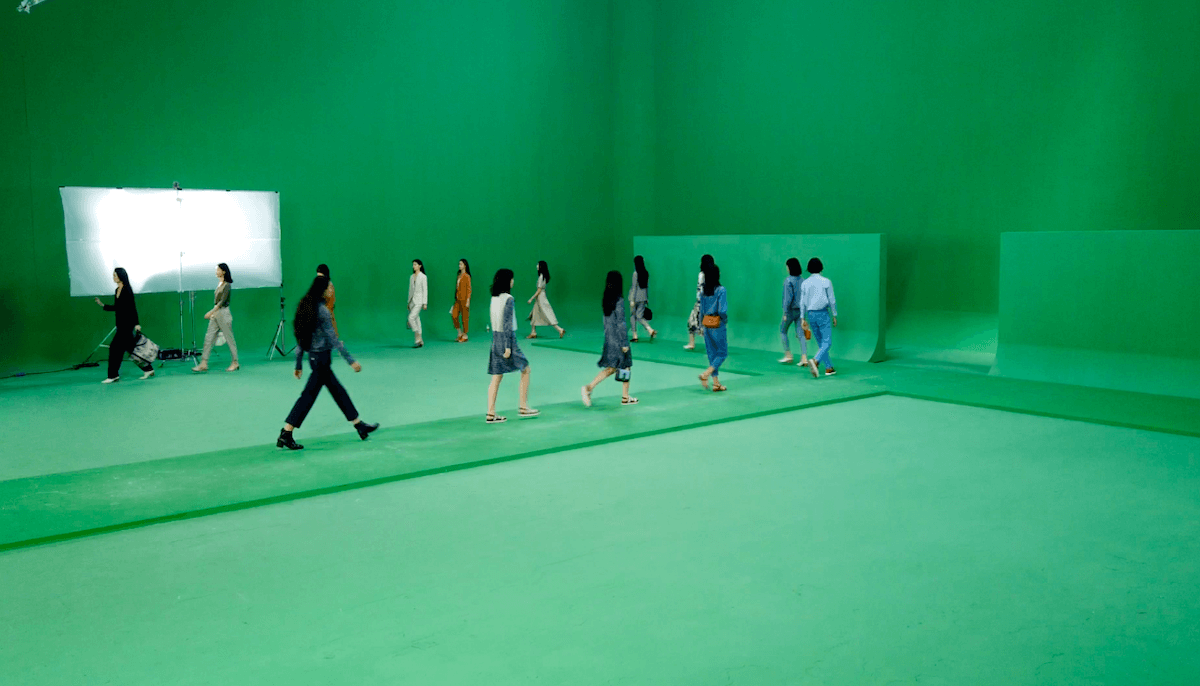
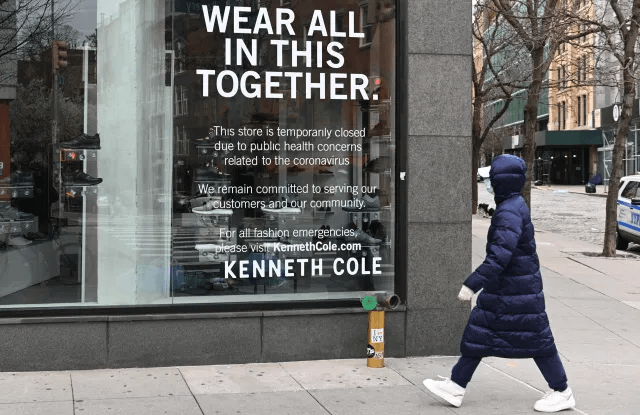
Consumer
- Consumers are starting to shift towards supporting small, local and independent brands and designers.
- Tastemaking has been democratized by influencers.
- Domestic cosy: as gen Z are more likely to stay at home (not only because of coronavirus), ‘inactive-wear’ is becoming a thing.
- Internet users are moving from sharing as a method of broadcasting themselves, into a way of sharing that has community at its heart.
- A decade-long build-up of bargain shopping culture will be exacerbated by a rise in anticonsumerism.
- Consumers seek out brands that they align with morally more than ever before, with an emphasis placed on conscious products.
Experts
We were guided by the principle of authenticity to make sure these quotes offer PVH a first-hand introduction to powerful patterns in the data. According to the fashion industry leaders, the COVID-19 pandemic, which has demanded a rethink of so many industry practices, can finally generate an era of slower fashion with fewer seasonal collections, deliveries suited to the weather and fewer markdowns.
“Considering that all of us — I mean us designers — have been complaining about the pace of fashion, about the unsustainable speed that the delivery calendar had us keep, this is for sure a chance to rethink a lot of things, including seasonality.”Donatella Versace
Designers and business people are supporting fewer, smaller and more season-less collections, and this movement was accelerated in 2020 with a global crisis;
“Less garments, less shows, less travel, less logistics transport, less but better fabrics — less, less, less but better thinking on usefulness for our future. There is always fashion, but the question is, what is it going to be, and how do we need clothing, bags, jewellery, and accessories in the world to come?”Marine Serre (source)
The next quote is illustrative of the proper mindset change inside the fashion industry and how to address customer needs.
“There could be more of a shift to on-demand production, which is a way to mitigate risk, and obviously there is a huge waste-reduction and material-use benefit because you aren’t purchasing and selling the excess. I could see more companies thinking about real-time production responding to consumer demand.”Saskia van Gessen
It is time to rethink new business models, more collaboration and a sense of individual responsibility when it comes to consuming fashion. When Dominique Drakeford was asked what's most important for a sustainable fashion industry, she said:
“People. You, me, us. We have to understand ourselves first before we can fix fashion.”Dominique Drakeford (source)
More people are engaging in environmental issues movements, social causes and supporting communities around the world.
“But we’re also seeing some of the most beautiful parts of humanity — the global sense of connection, realizing your actions make a difference not just for you and your household, but for the community and public good”Kathleen Talbot (source)
Numbers
- The fashion industry produces 10% of all humanity’s carbon emissions and is the second-largest consumer of the world’s water supply.
- Here are the most significant impacts fast fashion has on the planet.
- Clothing production has roughly doubled since 2000.
- While people bought 60% more garments in 2014 than in 2000, they only kept the clothes for half as long.
- In Europe, fashion companies went from an average offering of two collections per year in 2000 to five in 2011.
- Some brands offer even more. Zara puts out 24 collections per year, while H&M offers between 12 and 16.
- A lot of this clothing ends up in the dump. The equivalent of one garbage truck full of clothes is burned or dumped in a landfill every second.
- In total, up to 85% of textiles go into landfills each year. That’s enough to fill the Sydney harbour annually.
- Washing clothes, meanwhile, releases 500,000 tons of microfibers into the ocean each year — the equivalent of 50 billion plastic bottles.
- Many of those fibres are polyester, a plastic found in an estimated 60% of garments. Producing polyester releases two to three times more carbon emissions than cotton, and polyester does not break down in the ocean.
Primary Research
Over the weeks of work, we did deep interviews with 20 people from various backgrounds. During the first week of primary research, we spoke with users and experts in the field. We questioned broad issues around fashion, sustainability and the behaviour of buying and selling.
User Research
Our user research was done with a spread of young conscious people to (slightly less young) avid shoppers. To summarize their thoughts, we found these key takeaways.
Challenges which digital fashion face
- Currently, the most prevalent use-case is just trying something new. The future might take it mainstream.
- People don't like the idea of wearing basic digital stuff by mass-market brands.
Desire to support small, local and independent businesses/designers
- Prefers to buy from local stores, micro manufacturers. The quality is perceived as better, and supports value-driven businesses.
Behaviour paradox: minimalism x impulse to buy
- Following minimalism isn't easy, you need to be creative.
- Even heavy consumers see that maybe living on less would be better.
- People buy for pleasure. It's an impulsive decision.
Ways to increase the physical and fashion life-span of clothes
- Clothes that you can recolour every year
- Functional clothing with a lifetime warranty is ok. But I want to look different with my day-to-day clothing.
The needs addressed by fashion
- The way you dress expresses not only your aesthetic preferences but also your beliefs
- Fun to have a nice spectrum of colours on your body.
Expert Interviews
For our expert interviews we spoke with digital fashion designers, digital influencers, a young psychologist, a leader of B-Corps, people from the retail industry, owner of thrift clothes, a guru of community management and a digital artist. See the following summary, which is a result of their view on the problems around the fashion industry.
Digital & physical fashion are converging
- You can show that you belong to a certain subculture with digital clothes.
- Tools like SparkAR offer new computer vision technologies that give a lot of freedom to merge physical clothing and digital extras from brands with the real world.
Challenges which digital fashion face
- It's manual labour now: you design the personalized piece of clothing and then fit it to the photo, considering the light sources, etc.
- Digital fashion will remain niche and artsy if it will not be promoted by big brands.
- You can not touch and sense digital clothes.
Shifting to a digital-first approach
- Now it's mostly manual labour, but the future is AI.
- If fashion brands will apply a digital-first approach, they can do more inclusive digital fashion shows.
Digital as an eco-friendly & accessible alternative to physical fashion
- Digital fashion democratizes high fashion and makes it accessible to more people.
- Digital fashion is eco fashion, there's no waste and it's carbon-neutral.
- Digital fashion as a subscription: several looks per month.
DIY going mainstream?
- Imagine that you can make shorts out of your jeans, and it's planned by the manufacturer.
- Handmade clothes are really easy to sell.
Second-hand clothes: exclusivity and sustainability
- More and more people are moving towards the sustainable side, more and more people care about these issues.
- Second-hand fashion is: elegance and exclusivity.
Desire to support small, local and independent businesses/designers
- Small companies with a strong culture can boost big players in the industry.
- Secondary production is eco and on the edge, but you can't scale it.
Potential roles of brands to transition to sustainable options
- Future is personal, brands will gather data about us and offer personalized looks.
- Communication is the key to changing people's behaviour.
- What about a brand that can speak directly to you as a friend?
Value and Sustainability at the core level
- Sustainability is not only about the manufacturing process. It's also about values you translate.
- It's necessary to change the measurement of success.
- Companies have to create a mission that has sustainability at the core.
- The challenge of B Corps certification is to break the bubble and reach other companies (that the core business is questionable).
The needs addressed by fashion
- Fashion is content. It's a story being consumed and exposed to others. It's similar to watching a movie or reading a book.
Personas
From these insights, we created 3 personas. They summarised our research, and helped us design a solution that matches the research we have done leading up to the next phase.

Luisa Neuer
Bio
Luisa is 23 years old, and has worked for a development aid project in Tanzania. She's a vegetarian and cares a lot about the world. She doesn't buy fast fashion clothes, due to environmental impact and she's always asked about what she's wearing.
Gains
- Dedicated to spread word about her views
- Ideally her clothes should manifest her beliefs
Pains
- Concerned about her image of eco-conscious person
- Everything she does is questioned by her followers through the lense of sustainability

Mary Fashion
Bio
Mary is 18 years old and lives in Singapore. She’s never thought about the impact of fashion on environmental issues. She’s studying Business Management and posts 5–10 Instagram stories a day.
Gains
- Wants to feel beautiful and trendy
- Wants to feel comfortable
- Wants to give her family a good life
Pains
- Frustrated of ethical issues of people
- Needs validation of other people
- Stressed from work and family
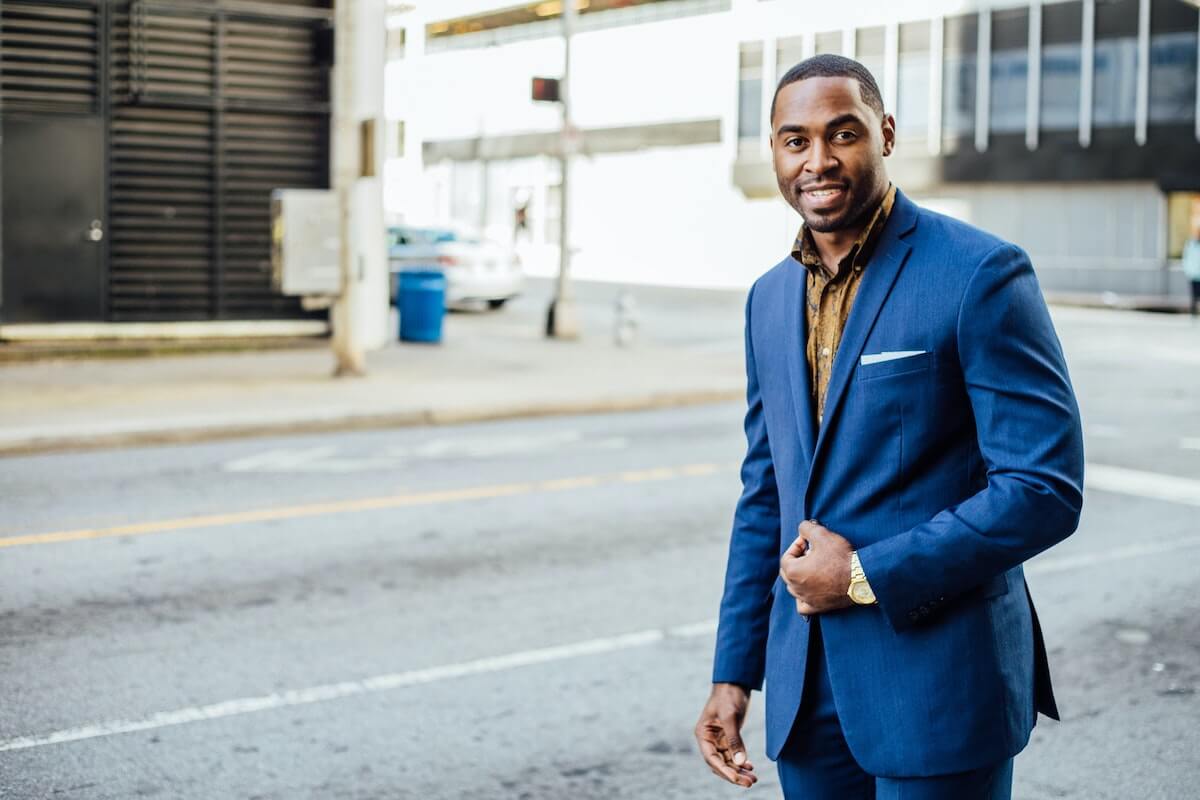
James Dickson
Bio
James is a 31 year old Mechanical Engineer from Brooklyn. He likes happy hours after work, and usually takes the metro. He also likes to run in the city when he's doing physical activity.
Gains
- Feels safe buying online
- Would like to travel more
Pains
- Concerned about buying the wrong thing in a digital environment
- Frustrted by wasting time when returning products
- Concerned about the future of sustainable engineering
How might we?
Despite the rise of the sustainability movement, the majority of young fast fashion lovers still just want cute, cheap outfits that look great on Instagram. Even those who are concerned by environmental issues, still want to look different every day — they don’t really want clothes that last long (like 5–10 years).
“Dresses become old when you’ve worn them twice”Mia, 16, UK
These key takeaways and the brief lead us to find our problem statement:
How might we make people feel they have an endless wardrobe without owning stuff?
Area of Opportunity
Designers are exploring the future of digital clothing. Digital Fashion is the visual representation of clothes designed and created using computer technologies and 3D softwares. As our experts told us, there are two types of digital clothing, one is 'digitized' versions of regular clothes (they can be used in virtual fitting rooms), and the other is conceptual clothes, which are designed without the intention to produce them in real life. They can be eccentric, extravagant, made of non-conventional materials like cellulose, glass, metal, and sometimes they just don’t follow any fashion rules and standards. We’re focusing mostly on the second type, because it’s more about sustainability and less about consumerism.
InstagramPrototypes
With this insight and a section of PVH feedback, we develop different ideas and prototypes.
Prototype 1: Wearby
A digital wardrobe with digital trendy clothes and a subscription to use exclusive pieces.
Play with: Prototype 1
Feedback
We interviewed young people from 4 countries to test, learn and improve our service.
- Cool but just to post a nice photo
“I don't think that I would use it so much that it would be worth $15 a month.”Aileen, 24 yrs
“That kind of fabric [shiny metallic], you can't get this kind of look from fabric, so that's really cool to have it on digital and make a cool photo of it.”Aileen, 24 yrs
“I don’t like to just post a photo on Instagram, but to change a behaviour is powerful.”Daniela, 19 yrs
- Digital clothes can allow people to try new things and develop new personalities
“Is really important that the clothes resonate with the person using the service.”Aileen, 24 yrs
- Endless possibilities are freedom
“it would be nice to see yourself in endless combinations of outfits.”Fernando, 22yrs, Spain
“I'd like to have such endless possibilities — it's freedom.”Artyom, 24
“I would love to try some digital fashion, which I would not be so brave to wear outside.”Elya, 27 yrs
“I like the idea of more test & learning experiences without wasting things.”Daniela, 19 yrs
Prototype 2
A digital wardrobe and a treasure hunt to find digital clothes to use in specific places around the world connecting people, brands and places.
Play with: Prototype 2
Feedback
Our second phase of collecting user feedback was done to test another prototype which integrated an endless wardrobe with a treasure hunt experience. Here are the main takeaways:
- People want to be better for the world
“If it helps people to become more conscious about consumerism, it is really nice.”Diego, 23yrs
“If this solution connects with social impact many friends will use it.”Daniela, 19yrs
“What if you can support a cause or your fav band and buy this piece of digital merchandise?”Natasha, 23 yrs
- Your outfit can express what you stand for
“I like to post about causes, this year I was really engaged with the Black Lives Matter movement and the fashion revolution.”Catarina, 18 yrs
“Fashion is a story I consume and expose to others.”Daniel, 32 yrs
- I want to show more content and story behind a piece of clothes
“For me, it is important to know how to help a cause and the real story behind, not just a photo.”Catarina, 18 yrs
For some of our expert interviewees to post a photo is about representation, not just having fun, and for fashion bloggers, it’s like a part-time job. Here are the main takeaways:
- Ideas for a new post is wealth
“It's cool to use it when you don't have time for ideas for new posts.”Varya, 20yrs, fashion influencer
“During the lockdown, it's hard to be an influencer — stores are closed, and you need to come up with ideas or lose the audience.”Artyom, 24yrs, stylist
“I have to post selfies and outfits in order to demonstrate my social value.”Yulia, 34 yrs, influencer marketing manager
- I would like to have exclusive pieces
“I'd like to have clothes which you can't find anywhere else.”Varya, 20yrs
- Not every brand has a future vision
“I think this app is not just for mass-market brands, but mostly for top pieces, luxury brands, hype brands and brands with a future vision.”Yulia, 34 yrs
“Asian fashion is made for this app.”Varya, 20yrs
Solution
After incorporating the feedback, we created our final solution.
Manifest
Manifest is a digital fashion platform for real-life impact. Connecting causes and an endless wardrobe, so what you wear becomes a statement. To illustrate what is does, we also created a third and final prototype.
Play with: Prototype 3
We would like to see a variety of products on Manifest, with a variety of use cases, created by different entities:
- We imagine big brands could sample their ideas digitally, to test user adoption before they start fabrication.
- We envision independent digital fashion artists like PassGoalTriple reaching a larger audience with their experimental creations.
- We imagine that established brands would like to put out certain products for free, connected to an AR experience that drive social impact through their name. We could (for example) ask Patagonia to create a special item, which they will share with Manifest users for free after they complete their hike challenge.
- We want people not only to donate to causes they care about, but be proud to show their support, by giving them a digital artefact to represent that. A suggested donation of $5,- could be a minimum, but we could allow users to donate more. Upon finishing their donation, it will now show up in their wardrobe, from which they'll be able to share a photo with their new digital piece of clothes.
These items show up in the inventory, where users will see items that stay permanently, as well as items that expire (like the super puffer in our prototype). Items that have already expired, are swappable for new item with people on the platform for free. By this we’re promoting the idea of swapping clothes with the community in digital as well as real life.
Feedback
This is what our peers said about it after the pitch.
“You guys are solving a real problem.”Wes
“Got me excited about the future of fashion!”Kristin
Feasibility
We see a few prerequisites for Manifest to succeed tech-wise. First, relatively fast hardware is needed. Modern android phones are equipped with ARCore support and iPhones run ARKit and RealityKit. Both of these are already widely supported by 3D render engines like Unity and Unreal, and even dedicated AR tools like SparkAR exist. These tools lower the barrier to market, and make developing Instagram filters trivial.
However, digital fashion brings a few new issues. Currently applying digital clothes to a photo require a lot of manual labor. Which is caused by three things:
1. Body types
Body types vary, and physical clothes come in different sizes. To realistically apply digital clothes to a photo, they have to match the size and body shape of the subject.
2. Masking
Since part of the clothes realistically end up behind the subject, the subject has to be isolated from the photo in order to convincingly superimpose the model on the subject.
3. Draping
Textiles are flexible. They have to realistically drape over and move with the subject of the photo.
Solutions
To solve these issues, we suggest a few areas of development.
1. Parametric
3D fashion has to be parametric; that means, driven by body dimensions. These dimensions have to be inferred from the photo being taken. It's likely necessary to take a few overview photos of the subject before the software will be able to estimate dimensions.

2. Subject Separation
Currently hardware isn't fast enough to separate a subject from the background in realtime, but a static image is easy to process. Services like remove.bg go a long way to separate subjects. Services like these are likely running on open source AI models to achieve pattern recognition like Uˆ2-Net.
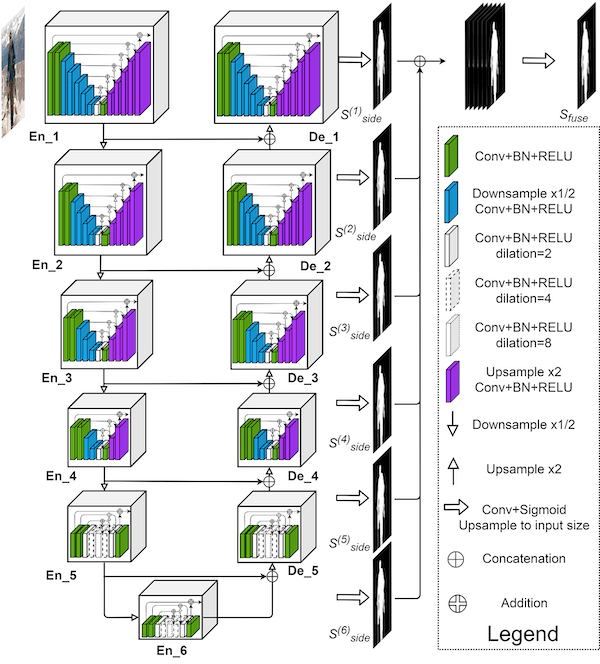
3. Real-time cloth simulation
Technologies regarding real-time cloth simulation have come a long way. Which might be a solution, although we foresee it could also be faked by 'pre-crumpling' for a few sizes, which will then be slightly distorted and morphed to fit the subject better.
To conclude, we're not saying this will be an easy feat. With this section we hope to illustrate the current issues that need to be solved, in order to give a better understanding of the road ahead. All the parts to achieve the proposed solution are there, however, PVH could be the one to bring it all together, to push the industry forward.
Pitch
Last words
If you're done reading everything, and still curious, we have made all of our research available on our Miro board:
Miro Board